Addr is a SaaS platform built to help businesses improve their online reputation by collecting and managing customer reviews. The functionality was ready, but the product lacked clear UX and a professional digital presence. The goal was to launch quickly with a strong brand, intuitive user flows, and a website that could attract early paying customers.
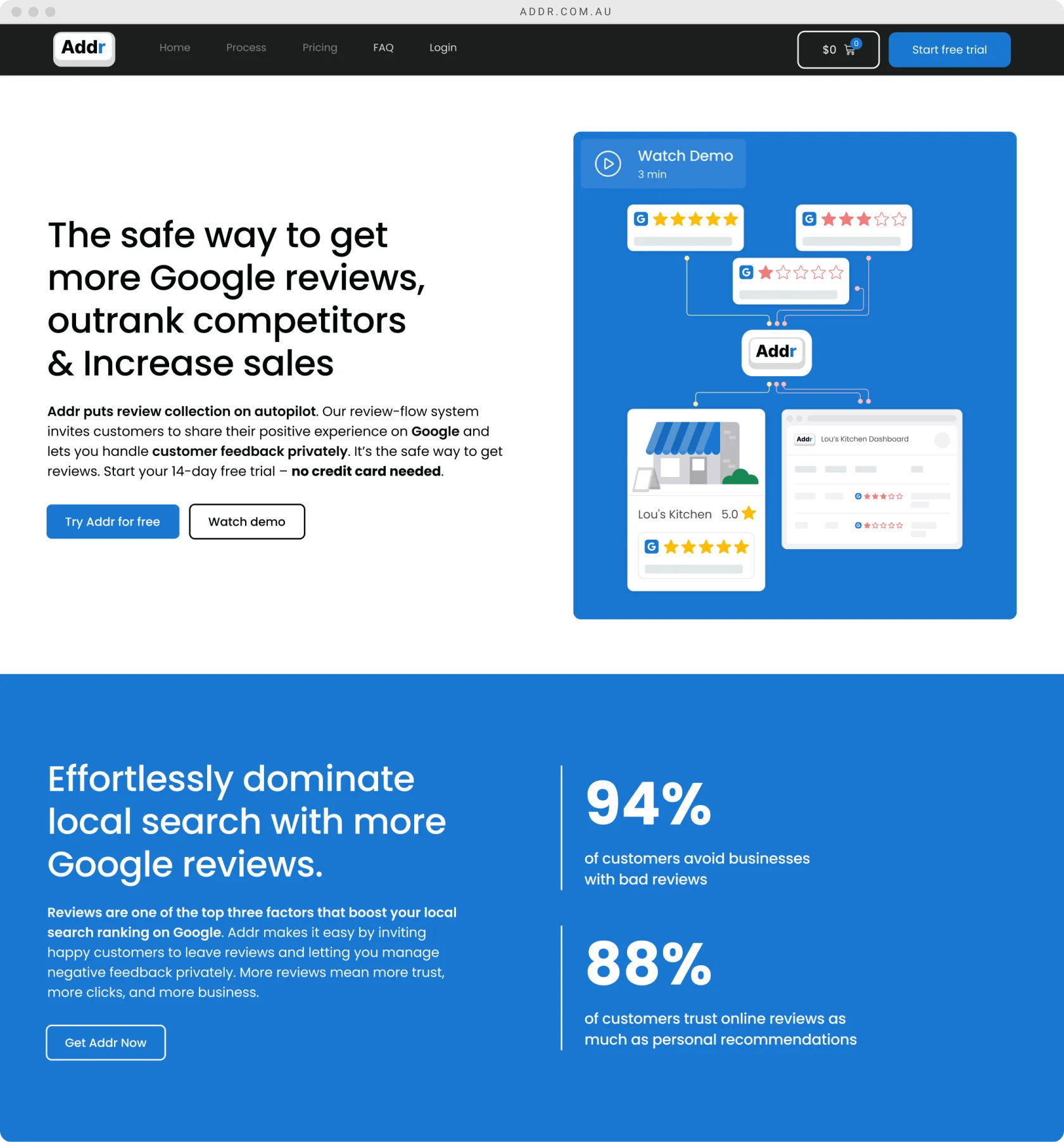
While the backend of Addr was fully functional, the navigation was only clear to the developer who built it. Customers struggled to understand both what the product did and how to get started. Without a professional website and streamlined onboarding, the risk was that businesses would not trust the tool or convert into paying customers.
The timeline to launch was short, resources were limited, and the messaging was complex. The project had to balance two priorities. The first was the customer journey from website visitor to paid subscriber. The second was the onboarding flow, where new users needed to create an account, configure their setup, and begin benefiting from Addr.
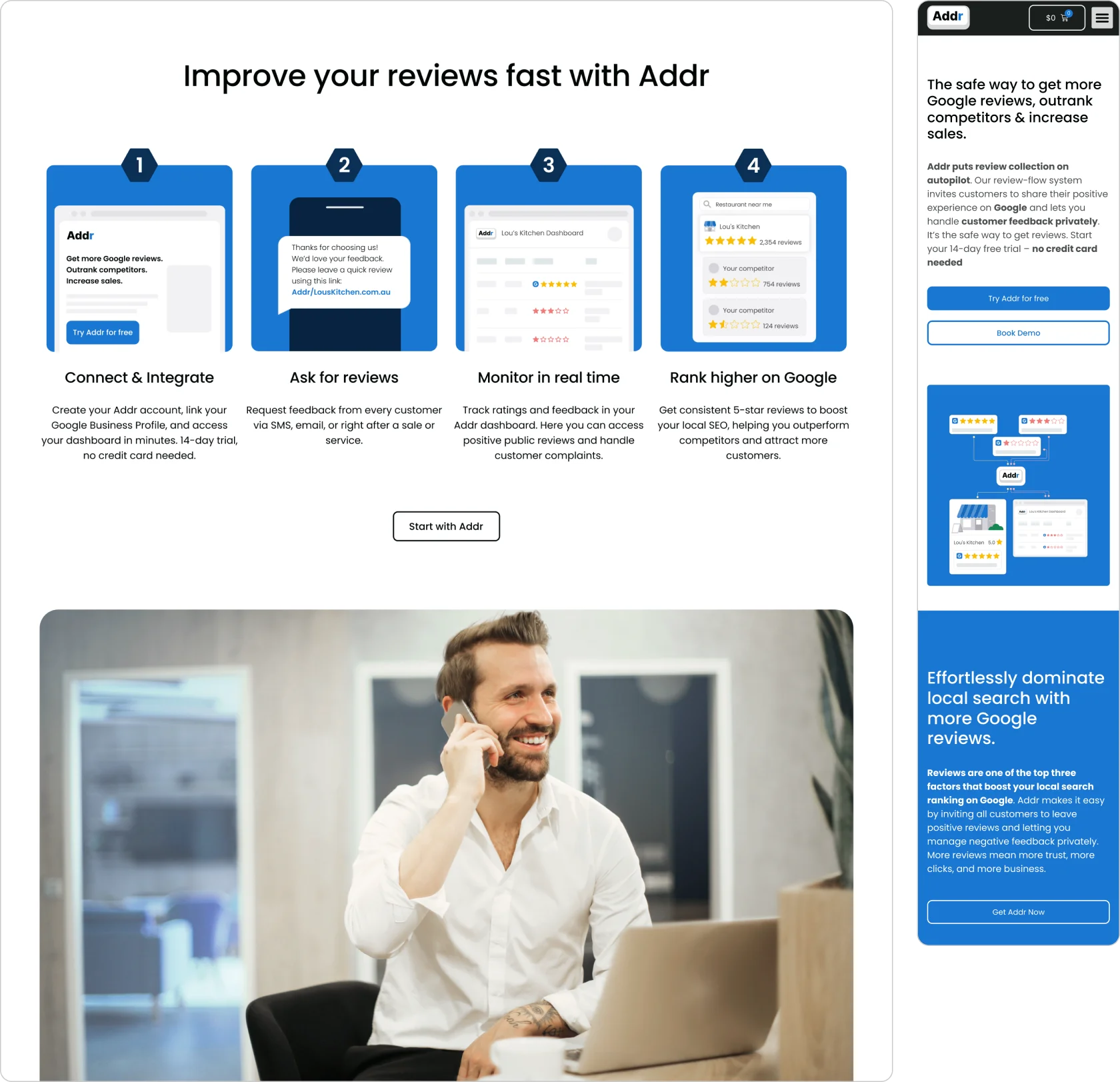
Early on, we bundled Addr with a set of NFC business cards in three formats. The idea was that the cards would complement the software by making it easier for customers to collect reviews.
But in testing, the cards quickly stole the spotlight. Instead of understanding Addr as a SaaS platform, people thought we were primarily offering business cards. What was meant to be a supporting feature ended up distracting from the core service.
This was a classic case of losing focus by offering too many things at once.
We decided to cut the business cards completely and bring full attention back to Addr itself. That clarity changed the narrative: visitors and testers now immediately understood that Addr was software to help them manage and grow reviews.
This pivot also simplified our website messaging and onboarding flows. Instead of trying to explain two products at the same time, we focused on telling one clear story.

I split the project into two clear streams of work. For the marketing website, I created a modern, tech-forward design that gave visitors immediate clarity and confidence, with conversion flows that made it simple to subscribe. For the product onboarding, I focused on UX design, mapping and testing flows that guided customers step by step through account setup so they could start realising value quickly.
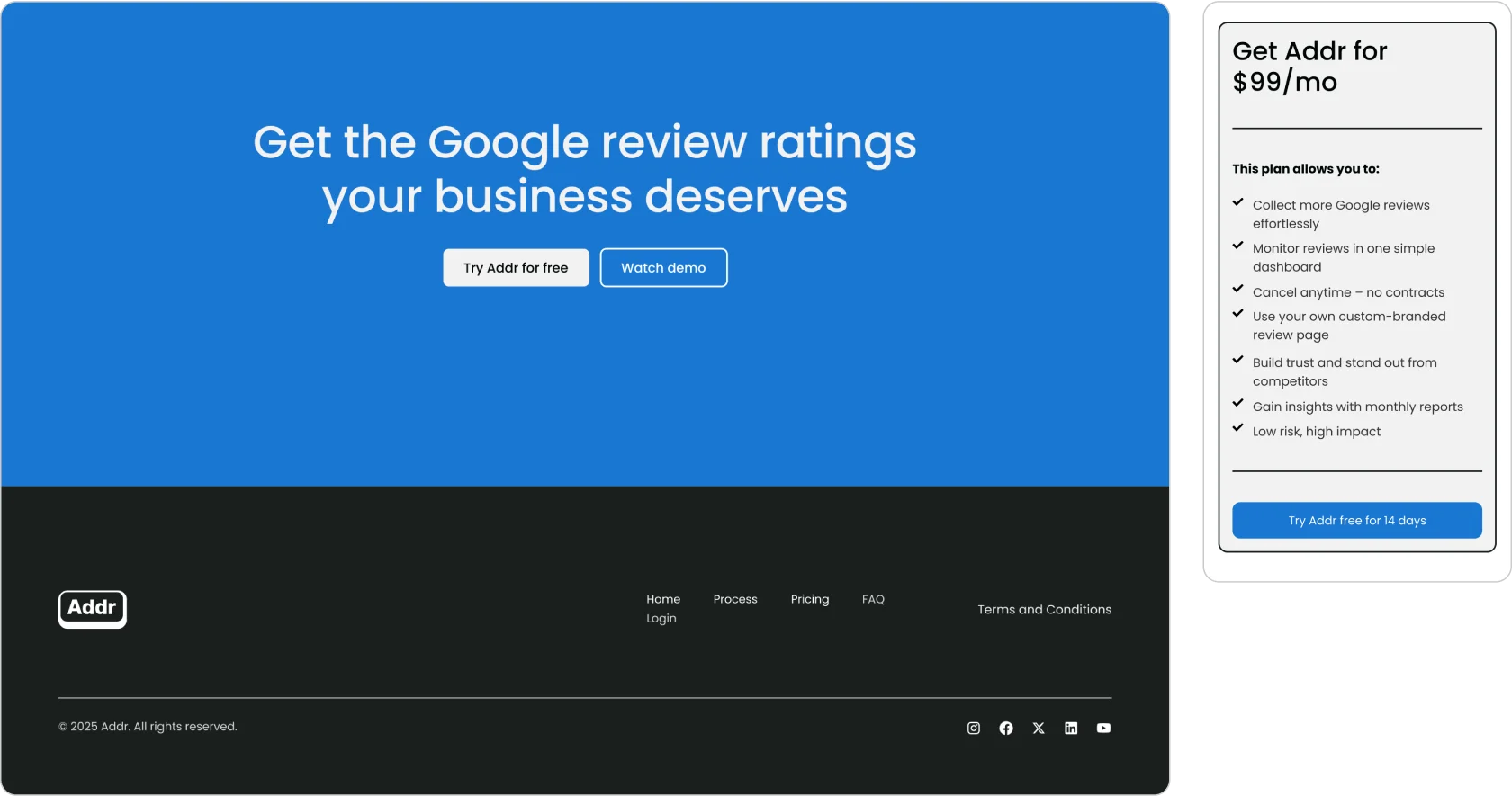
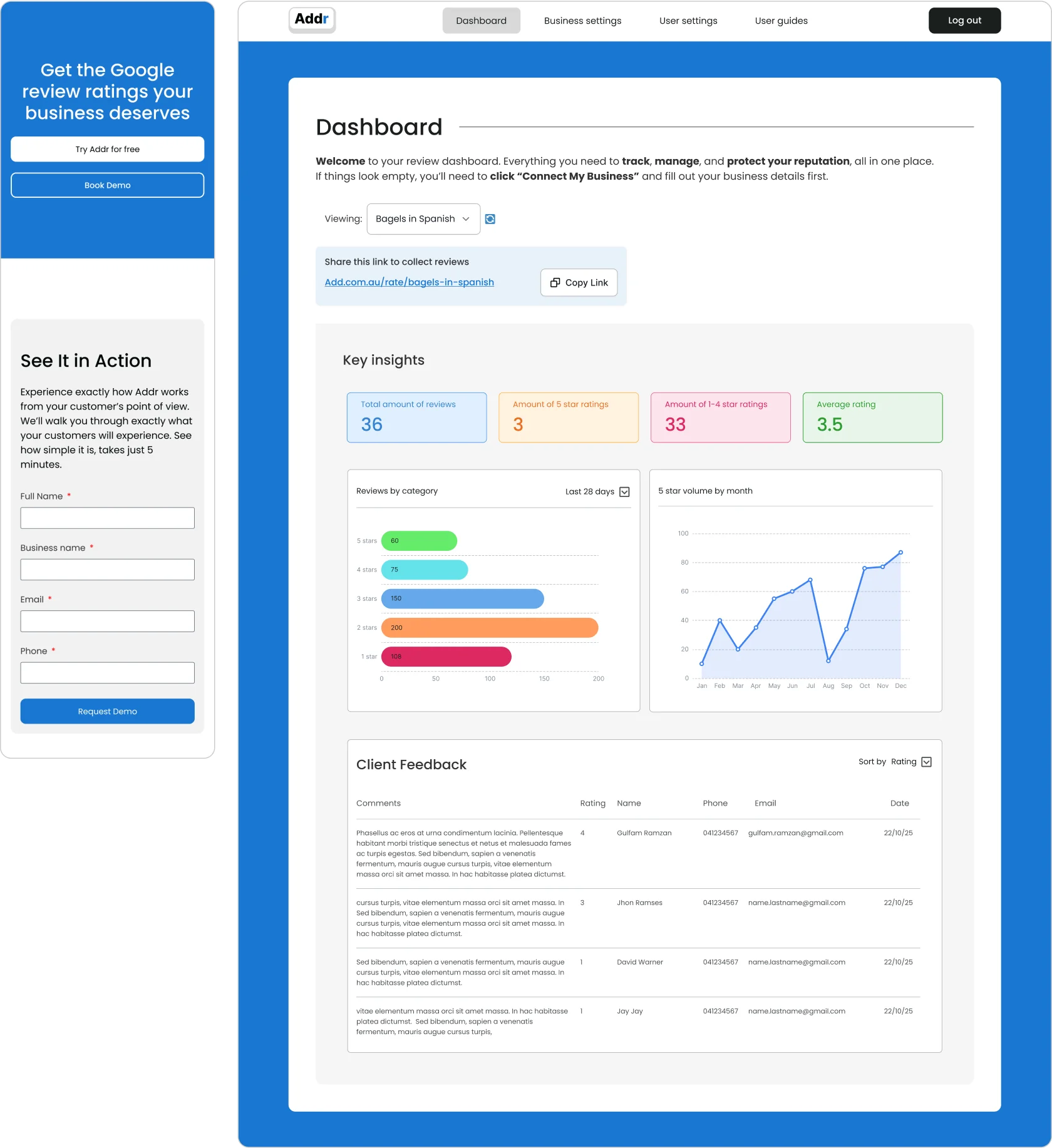
On the website side, I worked as both UX designer and developer. I mapped the visitor journey, designed wireframes and high-fidelity UI in Figma, then built the frontend in WordPress with Elementor for speed and flexibility. I also collaborated with a copywriter to simplify complex messaging and a content creator to produce explanatory videos and technical assets that were integrated directly into the site.
On the product side, I acted as UX designer, defining the onboarding flow and testing it with users to ensure clarity. I collaborated closely with the backend developer to connect the frontend and the platform’s automations in Make and Airtable, ensuring customers could move seamlessly from sign-up to setup.
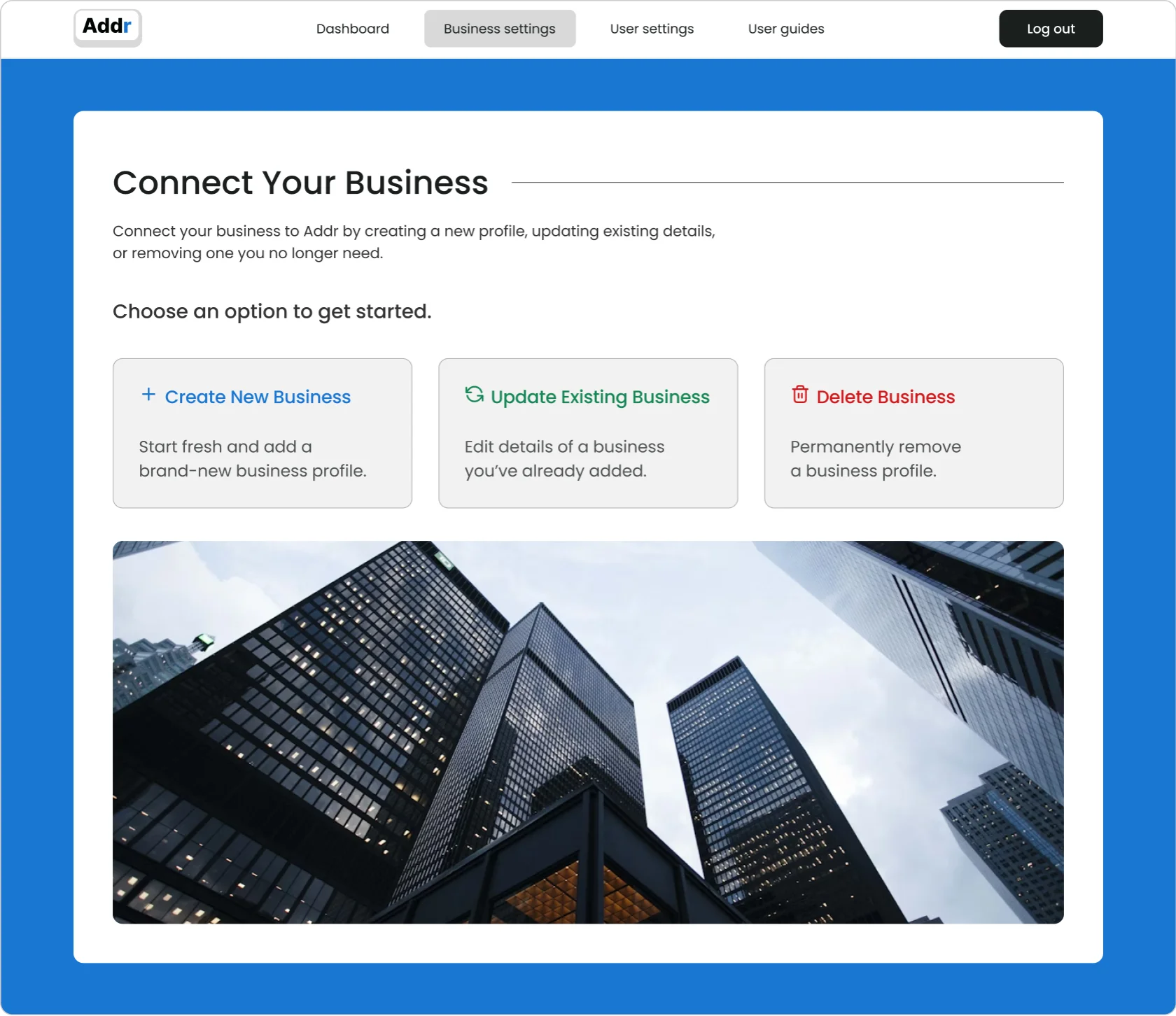
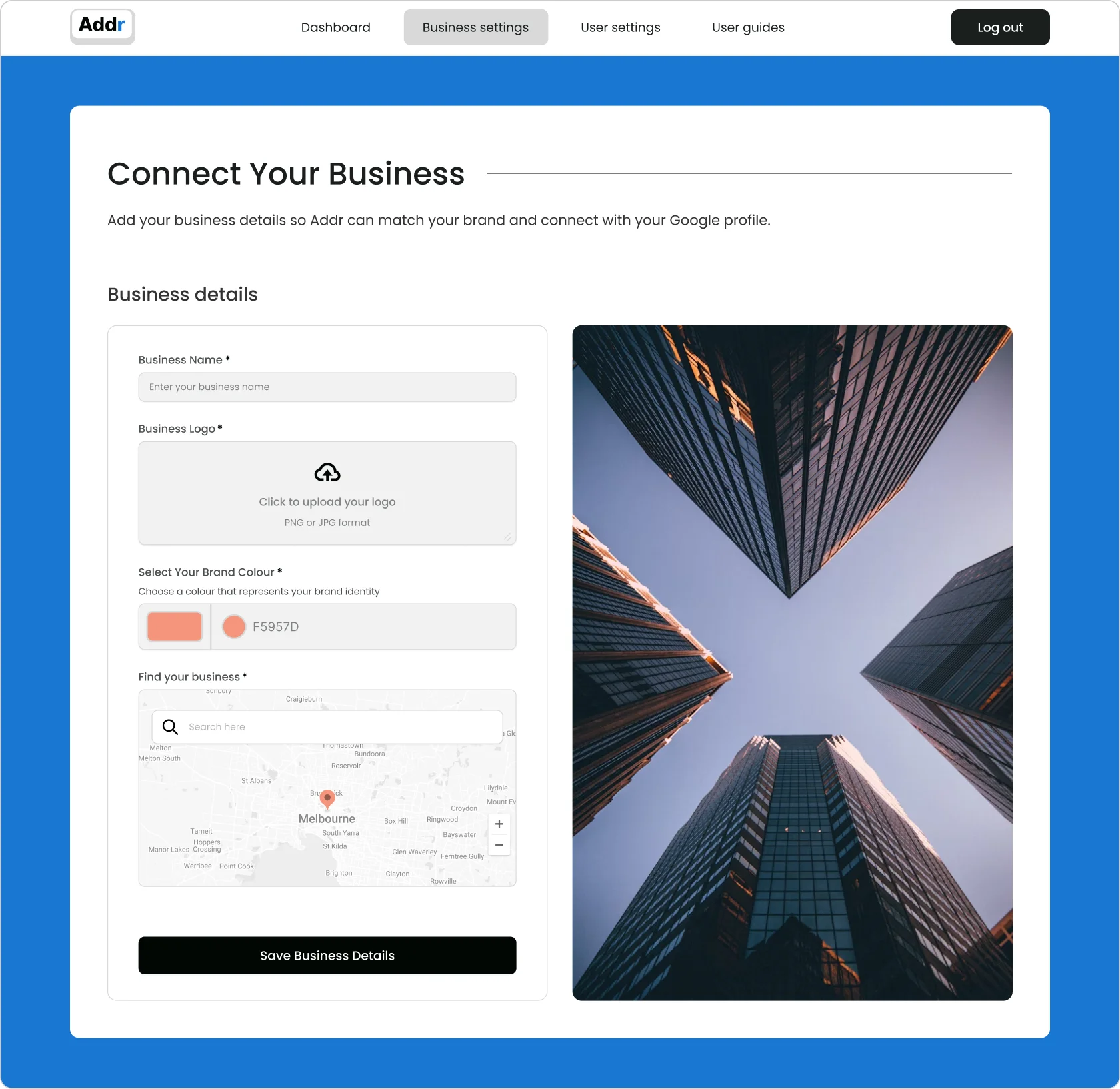
”The site looks sharp and professional. Customers understand what we do right away, which is the hardest part. Explaining everything clearly right from the hero section made a big difference. The webshop works great and the whole experience has helped us stand out and convert more leads.”
John K, Founder